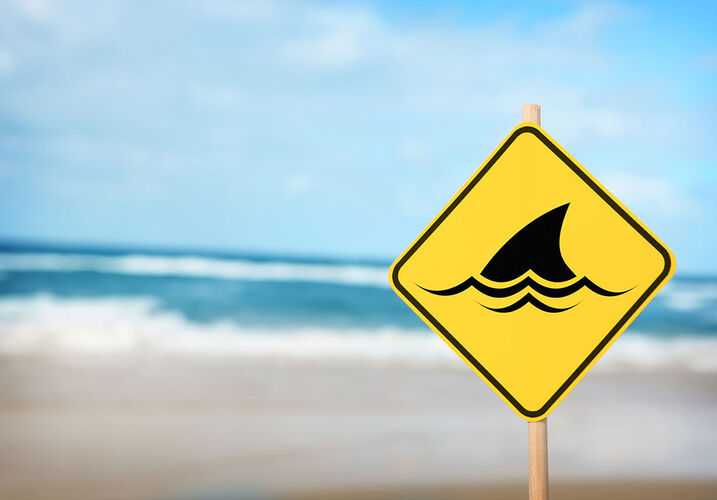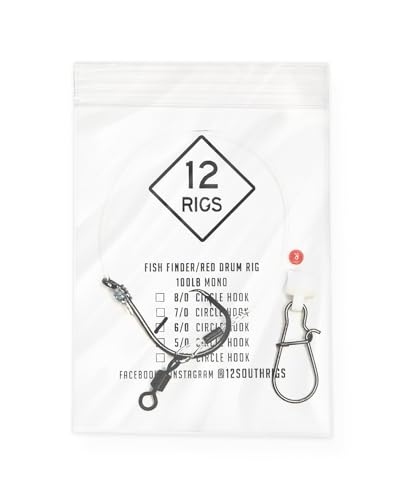Properly handling surf fishing bait involves keeping it fresh and secure to attract fish effectively. This article covers essential tips and techniques for managing bait while surf fishing, ensuring successful catches.
Surf fishing is a popular technique among fishing enthusiasts, allowing them to catch a wide variety of fish from the shoreline. One key aspect of surf fishing is bait management, as it plays a crucial role in attracting fish to your line.
Properly handling surf fishing bait involves utilizing fresh bait, storing it securely, and implementing effective techniques to maximize its appeal to fish. We will explore the essential steps and considerations in handling surf fishing bait, helping you improve your chances of a successful catch. Whether you are a beginner or an experienced angler, following these guidelines will enhance your surf fishing experience and increase your chances of reeling in the big one.

Credit: www.amazon.com
Choosing The Right Bait
When it comes to surf fishing, choosing the right bait is absolutely crucial. The type of bait you use can determine whether you’ll have a successful day of fishing or end up empty-handed. In this section, we’ll discuss the key factors to consider when selecting the perfect bait for surf fishing.
Understanding The Surf Fishing Environment
Before you start thinking about bait, it’s important to understand the environment you’ll be fishing in. This will help you determine the most suitable bait for the conditions. Consider the following points:
- Water clarity: Clear water may require more natural-looking baits, while murkier water might call for brighter or scented baits.
- Current: Strong currents might require heavier baits that can stay in place, while calmer waters may allow for lighter baits.
- Temperature: Fish species have varying feeding patterns in response to water temperature, so choose bait that matches the fish’s preferences in that temperature range.
Knowing The Target Species And Their Preferences
To improve your chances of success, it’s important to know the target species you’re fishing for and their preferred bait. Research the specific fish species commonly found in the area you’ll be surf fishing and learn about their preferences. Here are some examples:
- Striped bass: They are known to go for live bait, such as live eels or cut bait like menhaden or clams.
- Flounder: They are attracted to small fish, like minnows or killifish, as well as artificial baits resembling shrimp or minnows.
- Bluefish: They have an aggressive feeding habit and are attracted to metal spoons, plugs, or cut bait like squid or mullet.
Best Natural Baits For Surf Fishing
Natural baits have proven to be highly effective in surf fishing, as they closely resemble the fish’s natural prey. Here are some of the best natural baits to consider:
- Shrimp: Widely used and versatile, shrimp can attract a variety of fish species.
- Sandworms: These long, slimy creatures are great for species like flounder and striped bass.
- Mullet: Cut mullet is excellent for attracting larger fish like bluefish or redfish.
- Crabs: Crabs work well for species like black drum or sheepshead.
Artificials And Lures: When To Use Them
While natural baits are often the go-to choice, there are situations where artificial baits and lures can be highly effective. Consider the following scenarios:
- Clear water: In clear water, fish might be more wary of natural baits. Artificial lures that mimic their prey can be more enticing.
- Fast-moving water: In areas with strong currents, it can be challenging to keep natural baits in position. Artificial lures can be easier to control.
- Chasing schools: If you encounter a school of fish feeding aggressively, lures that imitate baitfish can trigger strikes.
Remember, it’s essential to adjust your bait selection according to the conditions and the preferences of the target species. By understanding the surf fishing environment, knowing your target species, and choosing the right bait, you’ll greatly increase your chances of a successful and rewarding day of surf fishing.
Properly Preparing Bait
When it comes to surf fishing, having properly prepared bait can make all the difference in attracting and catching fish. Whether you’re using natural baits or artificial lures, taking the time to prepare and rig them correctly can significantly increase your chances of a successful fishing trip.
In this section, we will discuss the importance of freshness in bait selection, as well as how to store and prepare natural baits. We will also explore how to enhance their attractiveness with scent and flavor. Additionally, we’ll provide some essential tips for rigging artificial lures effectively.
Freshness Is Key: Selecting And Storing Baits
To maximize your chances of enticing fish, it’s crucial to start with fresh bait. Here are some key points to keep in mind when selecting and storing bait:
- Choose bait that is lively, vibrant in color, and doesn’t have a foul odor.
- Opt for fresh, local bait whenever possible, as it is more likely to be the preferred food source for the fish in that area.
- Store bait in a cool environment, preferably on ice, to maintain its freshness and prevent spoilage.
- Keep the bait container well-ventilated to prevent suffocation of live baits.
- Avoid freezing natural baits, as it can affect their texture and scent, making them less attractive to fish.
Preparing And Rigging Natural Baits
Preparing natural baits properly is essential to ensure that they are presented in the most enticing way for the fish. Consider the following steps:
- Remove any excess slime or blood from the bait before rigging it. This will prevent it from clumping and improve its presentation.
- Tailor the size of the bait to match the target species. Larger baits may attract bigger fish, while smaller baits are better suited for smaller species.
- Use sharp hooks and secure the bait firmly to prevent it from easily detaching.
- Take advantage of different rigging techniques such as carolina rigs, drop-shot rigs, or sliding sinker rigs, depending on the fishing conditions and the behavior of the fish.
Enhancing Attractiveness With Scent And Flavor
Adding scent and flavor to your bait can make it more irresistible to fish. Here are a few ideas for enhancing bait attractiveness:
- Apply fish attractants or scented oils to your bait. These products mimic the scent of natural prey, making your bait more appealing to fish.
- Incorporate natural flavors by injecting baits with garlic or shrimp scent.
- Consider using brine solutions to toughen bait, preventing it from being easily stripped by small fish.
Tips For Rigging Artificials And Lures
Rigging artificial lures properly is crucial for fooling fish into biting. Here are some tips to make the most out of your artificials:
- Ensure that the lure is securely attached to the line or leader, using appropriate knots for maximum strength.
- Take advantage of different rigging techniques such as texas rig, carolina rig, or jigging, depending on the type of lure and the target species.
- Experiment with different colors, sizes, and actions to find what works best in your fishing area and conditions.
- Keep an eye on the condition of your lures, replacing damaged or worn-out ones to maintain their effectiveness.
By properly preparing your bait and selecting the right techniques, you can significantly increase your chances of success in surf fishing. Remember, fresh bait, proper rigging, and attention to detail can make all the difference in enticing fish and reeling in that prized catch.
So, take the time to prepare your bait correctly, and get ready for an exciting and rewarding fishing experience!
Effective Bait Presentation
Matching The Bait Presentation To The Conditions
When it comes to surf fishing, one of the key factors in attracting fish is presenting your bait in the most effective way. Different conditions require different bait presentations to entice the fish and improve your chances of a successful catch.
Here are some tips to help you match your bait presentation to the conditions:
- Clear water: In clear water, fish can see your bait more easily, so it’s important to make it look as natural as possible. Consider using live bait, such as sand fleas, shrimp, or small baitfish, and present them on a carolina rig or a dropper loop rig. This allows the bait to move naturally with the current, making it more enticing to the fish.
- Murky water: In murky or turbid water, visibility is reduced, so using scented bait can be more effective. Cut bait, like squid or mullet, work well in these conditions because their strong smell can attract fish from a distance. Use a fish finder rig or a fish finder slider rig to keep the bait near the bottom, where fish are likely to be feeding.
- Weedy areas: When fishing in areas with lots of vegetation or weed, it’s essential to use weedless presentations to avoid getting your bait snagged. Texas rigs and weedless spoons are good options in these situations. You can also try using soft plastic lures with weedless hooks to mimic the movement of baitfish while reducing the chances of getting tangled.
Fishing Tides: Timing Your Casts
Understanding the tides is crucial for successful surf fishing. Fishing at the right tide can significantly increase your chances of catching fish. Here are some tips on timing your casts according to the tides:
- Incoming tide: During the incoming tide, fish are more active and tend to move closer to the shore to feed on baitfish and other prey. This is an excellent time to cast your line and present your bait. Aim for the high tide, as fish are pushed closer to the beach.
- Outgoing tide: As the tide goes out, fish tend to move back to deeper waters. However, the outgoing tide can still be productive, especially if there are deep channels or troughs near the shore. Cast your line towards these areas and use bait that mimics what the fish are feeding on.
- Slack tide: Slack tide refers to the period between high tide and low tide when the water is not moving much. While fish may be less active during this time, it can still be an excellent opportunity to fish. Target structures like rocks, jetties, or piers, where fish might seek shelter and wait for the tide to turn.
Casting Techniques For Maximum Distance And Accuracy
To cover more ground and reach the fish, it’s important to master casting techniques that allow you to achieve maximum distance and accuracy. Here are some casting tips to improve your surf fishing game:
- Long casting: To cast a long distance, use a long surf rod with a high-quality spinning reel. Gradually accelerate your casting motion, releasing the line at the right moment to achieve maximum distance. Practice your timing and release technique to avoid backlash and ensure a smooth cast.
- Accuracy casting: If you spot fish or structure in a specific area, accuracy is crucial. Aim for a target using a side-arm or overhead cast, depending on the distance and wind conditions. Practice casting accuracy by using hula hoops or other targets on the beach to improve your aim.
- Wind casting: Surf fishing often comes with challenging wind conditions. To cast effectively in the wind, adjust your casting angle and power. Casting into the wind can help carry your bait further, while casting with the wind can let you reach the desired spot more accurately. Experiment with different techniques to find what works best for you.
Using Rigs And Setups For Optimal Bait Presentation
Having the right rig and setup can significantly improve your bait presentation, enticing more fish to bite. Consider the following setups for optimal bait presentation while surf fishing:
- Carolina rig: The carolina rig is an excellent choice for presenting natural bait like live shrimp, crab, or sand fleas. It consists of a sliding sinker, a bead, a swivel, and a leader with a hook. The sliding sinker allows the bait to move freely with the current, attracting fish with its natural presentation.
- Fish finder rig: This rig is ideal for presenting cut bait near the bottom where larger, bottom-feeding fish are likely to be. It features a sliding sinker, a bead, a swivel, a leader, and a hook. The sliding sinker keeps the bait close to the sea floor, maximizing its visibility to the fish.
- Popping cork rig: When targeting fish that feed closer to the surface, a popping cork rig can be effective. This rig consists of a popping cork, a leader, and a baited hook. The popping cork creates noise and attracts fish by mimicking the sound of feeding activity, making it an excellent choice for species like redfish or speckled trout.
Remember, practice and experimentation are key to finding the best bait presentation for different conditions. By adapting to the environment and using the right techniques, you’ll increase your chances of a successful surf fishing trip.
Conclusion
Surf fishing bait can make or break your chances of a successful fishing trip. By handling your bait properly, you can enhance your chances of attracting the right fish and getting that exhilarating catch. Remember to choose the right bait for the target species and ensure it is fresh and appealing.
Properly storing your bait and handling it with care will also play a key role in its effectiveness. Whether you are using live bait or artificial lures, make sure to handle them with clean hands and avoid excessive handling to prevent damaging the bait’s appearance and scent.
Finally, don’t forget to adjust your bait presentation according to the current conditions to optimize your chances of success. With these tips in mind, you’ll be well-equipped to handle surf fishing bait properly and increase your chances of landing the big one.





